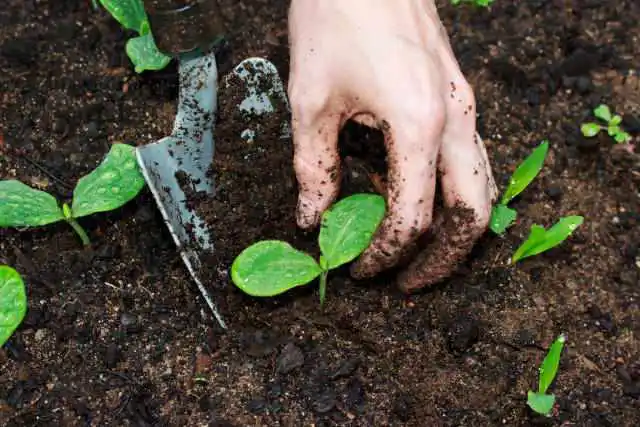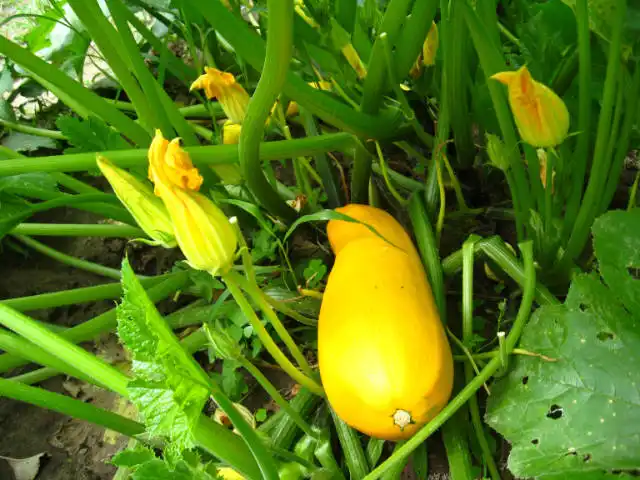Squash is one of the easiest and most rewarding crops you can grow in your Arizona garden! Whether you’re dreaming of tender summer squashes or hearty winter varieties like butternut, acorn, or spaghetti squash, this versatile plant is a garden powerhouse. With a little care, each plant can yield up to 10 pounds of produce!
So, are you ready to fill your garden beds (and your plates) with delicious homegrown squash? Let’s explore when to plant, how to care for, and when to harvest squash in gardening zone 9b.
This post may contain affiliate links. Please read our disclosure policies.
Winter vs. Summer Squash: What’s the Difference?
In most parts of the country, winter and summer squash are planted at different times of the year. But in Phoenix’s warm climate, both types can be planted in the same growing seasons—spring and summer!
Here’s a quick rundown:
- Summer squash (like zucchini and yellow crookneck) is fast-growing and best enjoyed fresh. The skin on summer squashes is edible.
- Winter squash (like butternut, hubbard, acorn, and spaghetti squash) takes a bit longer to mature but stores beautifully for months.
Phoenix Gardening Steps: Grow Squash
- When and how to plant squash
- What does squash need to grow?
- What grows well near squash and what doesn’t?
- Harvesting squash- When is the ideal time to pick squash?
When to Plant & How to Grow Squash
Squash are warm season plants. They take a lot of space in a garden, however they also produce a lot, Plant squash in the months of July, August, February, March and April.
Squash thrives in warm soil, so timing is key. In zone 9b, you can plant squash during these months:
- Spring: February, March, and April
- Summer: July and August
Plant seeds about 1 inch deep, and you’ll see seedlings pop up in as little as 7–14 days. Before you know it, your squash plants will sprawl across your garden bed, growing up to 4 feet wide and 2.5 feet tall!
Pro Tip: If you’re short on space, try using a trellis to grow squash vertically. It’s a great way to save room in your garden while keeping your plants healthy and tidy.
Sow seeds under an inch of soil. Seedlings should appear within two weeks.
Squash plants can spread out four feet and gain a height up to two and half feet.

How to Care For Squash: What Does Squash Need to Grow?
Light Requirements: Squash need full sun or about 6-8 hours of sun a day.
Soil Requirements: Prefers fertile well-drained soil. Squash like most vine crops prefer slightly acidic pH. The soil pH range of 6- 6.5 is ideal.
Water Requirements: Squash like consistent moisture. Provide 1″ of water per week or as needed.
Provide squash with a trellis and train them to climb vertically to save space in the garden bed.
Companion Plants for Squash
Radishes and nasturtiums are great companion plants for squash. They help repel insects.
Squash thrives alongside certain plants while others should be avoided. Here’s a quick guide:
- Best companions: Radishes and nasturtiums are excellent for repelling pests like squash bugs. Plus, nasturtiums are gorgeous in your garden!
- Plants to avoid: Keep squash away from potatoes, as they can compete for nutrients and space.
When to Harvest Squash in Phoenix
Squash plants take 60-90 days from the day of planting until harvest day. Squash planted in March would be ready for harvest in May and June. If planted in the summer squash is ready to harvest October and November.
Timing your harvest depends on the type of squash you’re growing:
- Summer squash: Harvest when fruits are small and tender, about 6–8 inches long. Pick them often to encourage more production.
- Winter squash: Wait until the skin is hard and difficult to pierce with your fingernail. This usually takes 60–90 days from planting.
Growing squash is a rewarding adventure. With just a little planning, these prolific plants will fill your garden with an abundance of fresh produce—and your kitchen with delicious possibilities.
Whether you’re grilling zucchini, roasting butternut, or twirling spaghetti squash into a healthy pasta dish, there’s nothing quite like the taste of homegrown. So grab your seeds, prepare your garden bed, and let’s get growing!

